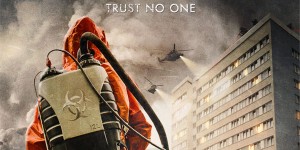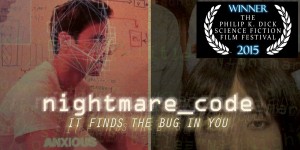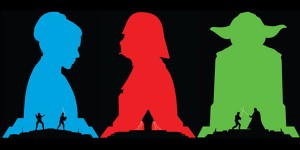Overall:
I quite enjoyed the anthology, there were high points and low points, but it worked well as a number of stories linked by a common thread, wormholes. Several of the stories also seemed to reference at least the first story, and from there others, to a lesser degree. Whether this was accidental or intentional, it worked out well. To anyone looking for a quick read of some engaging stories I recommend picking this volume up. Below I have reviewed each individual story.The Challenge:
An intriguing story of a near future journey through a mysterious wormhole. It follows the mission commander Elaine who had been training for a long duration colonization experiment on Mars when the wormhole appears. It's nice to see a story with professionals doing their job even when the job changes suddenly. The characters are believable, interesting, and relatable. Excellent job.Through Glassy Eyes:
Lady or the tiger. Many of us read this short story in high school, the elegant cliff hanger that left you asking what door to open. TGE is set after thr challenge and follows a mega Corp as they create, release and then deal with the fallout of the world's first networked neural implants. It's an excellent sorry and one that anyone interested in such tech should read. It is also quite similar to the short lived Web series H+ which is a must watch. A great effort with touches of mega corps and a future that while only 70 years ahead had undergone significant societal change.Here, there, forever:
Not my favorite of the stories. It starts out promising, then takes an odd turn into fantasy. The ending does raise an interesting question though about the nature of the rest of the narrative. Quite a lot of echoing in the story however. Another edit pass would have tightened it up nicely.AI denier:
Fonts are important, especially with the letter I. I originally went into this story thinking it was called Al denier. The story stumbles at first to get the protagonist shifted forward in time. Once in place however, it ran along fine with a woman out of time dealing with a future where the AI have taken over and turned most sentient biologic life into subjugated citizens, little better than slaves.Flawed Perspective:
A story with a definite twist. When an earth exploration ship find itself cut off from Humanity, The Crew ally themselves with a powerful yet pacifistic race. They then take up arms against their new allies enemies and begin to carve out a new Empire for themselves. Ultimately this is a story about the corruption of power. And comma House of such corruption can blind you to your own history. An interesting read, that would probably work better as a full-on novel comma as certain advances are just glossed over in an effort to advance the plot.
The Lost Colony:
When a smuggler ship cuts it a little close trying to jump out of a protected wormhole things go very wrong for the crew. This story had me pumped from the start with a very firefly-esque crew doing their best to keep their ship flying as they evade an STA patrol and attempt to jump out system. Things don’t go to plan and they end up stranded inside the closed wormhole, looking for a way out. A fun, self contained story, that was a blast to read.
The Aeon Incident:
What happens when you combine Star Trek with Warhammer 40k? The Aeon Incident, that’s what. Be prepared for intense battle armored action, mixed with first contact protocols of Star Trek’s Federation. Action packed and fun, the twist at the end was a genuine delight.
The Doors of the Temple:
The Earth is being ravaged by a war against powerful aliens, and no idea is too outlandish to examine as a means of ending the conflict. When a widowed Ace Pilot is offered one final chance at saving the Earth using mythology and a crazed, BO ridden Irish scientist he takes it and one final ride through a wormhole like no other.Dead Weight:
Months from rescue with a damaged ship thrown through a sudden wormhole, Captain Guan Xi Has a mystery on his hands. Who, or what is killing his crew. A fun little mystery story with some nice twists.Webbed Prisms:
This was probably the most interesting story so far. Told from two different perspectives, on either side of the wormhole it showcases how societies differ and can changes, especially with advanced technology. I don’t want to give away too much, but would love to see this one expanded into a novel. Even so, as it stands now, it is a nicely contained story.Anathema:
Quite an interesting story and one that diverges from the norm in a good way. The crew of the wormhole corvette Anathema must escort 4 freighters to a mining colony cut off for 16 years. What they find when they arrive changes everything.When the Skies Open:
Not all colonies are created equal. On an Earth colony cut off from resupply generations have past and what technology that is left is in ill repair, if it functions at all. When a wormhole reopens and Earthers return they bring with them new miracles of technology and medicine, but at what price? This was a well constructed story, with the mechanics of it such that you felt the confusion of the main character as she witnesses a major change to her society and wrestles with the long terms impacts, a good read with a solid, coherent story.A Second Infection:
This was an odd one. For the medically minded the story will be easy to follow, for others, get ready to learn a lot about how infections work. The story gets medical and metaphysical fast so might not be everyone's cup of tea, but is an interesting take on the overall subject matter.Personal Growth:
The longest story in the anthology wraps up the book, and follows the Hong Kong based crew of a budget mission through a wormhole. Not giving away too much it works nicely with some of the other stories presented here (The Challenge, Webbed Prisms in particular) and bookends the anthology well. Clearly some talent here and a well constructed, concise tale that handles its own internal technologies, sciences, and logic well.In the end, this is a great book and a definite recommended read.
Explorations: Through the Wormhole Kindle Edition
Product Details
File Size: 2467 KB
Print Length: 376 pages
Simultaneous Device Usage: Unlimited
Publisher: Woodbridge Press (August 31, 2016)
Publication Date: August 31, 2016
Sold by: Amazon Digital Services LLC
Language: English
ASIN: B01LC0JZD4
Text-to-Speech: Enabled
X-Ray:
Not Enabled
Word Wise: Enabled
Lending: Not Enabled
Enhanced Typesetting: Enabled


































































